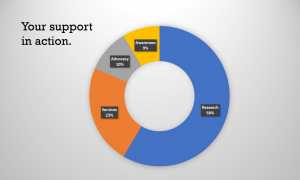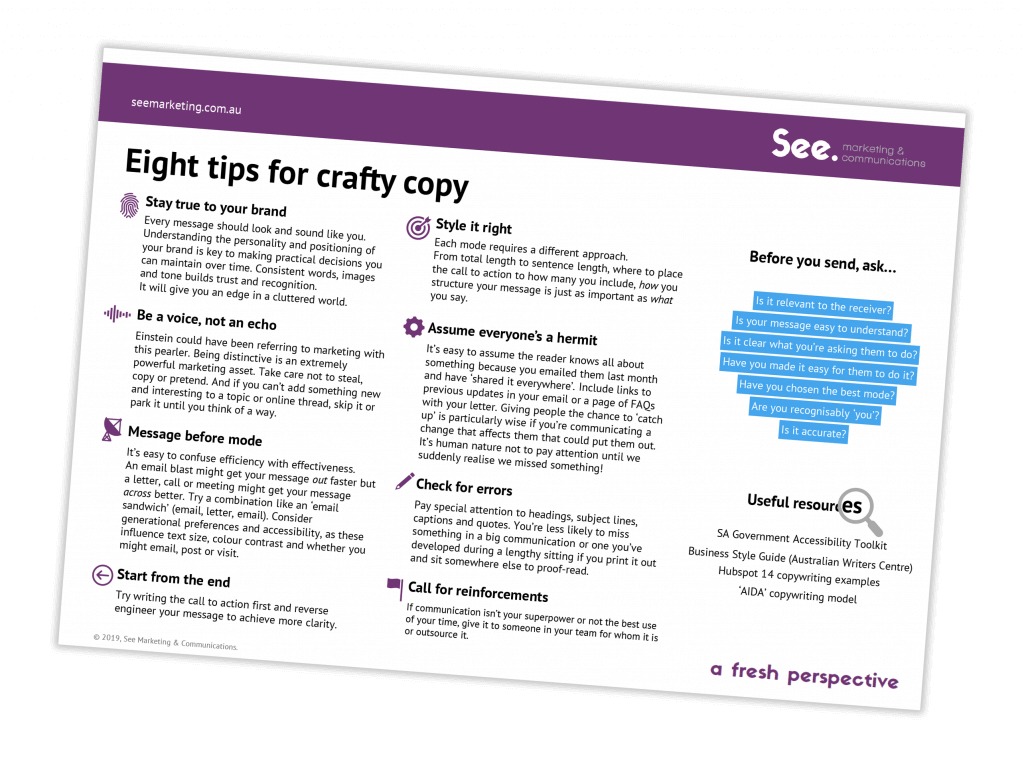 Producing an annual report can be a thankless task.
Producing an annual report can be a thankless task.
From re-working schedules, and all but stalking usually cooperative work-mates for overdue content, it can be tough for the person who needs to make it happen.
Yet it an annual report can be truly impactful. It has enormous potential to humanise the organisation, affirm donors, engage future supporters and motivate staff by showcasing the collective progress towards a united purpose.
I’m a strong advocate for transparent and authentic reporting by every organisation. But particularly so for charities who rely so much on credibility. As Head of Marketing & Communications at the Leukaemia Foundation, I made it my mission to educate internal stakeholders to produce market-oriented Annual Reports, and the effort of all was rewarded by a Top 10 ranking in 3 consecutive PwC Transparency Awards which in itself provided an independent vote of confidence to donors.
Annual report time can be challenging but the outcome could be the difference between someone deciding to start or stop supporting you. So I’ve pulled together 7 tips I think can help make life a little easier for your organisation the next time around.
1. Healthy is as healthy does
If you’re in an organisation where the very word ‘annual report’ triggers an eye-rolling, eye-twitching response, it’s time to enlist the help of the CEO to help re-frame and elevate it’s value.
A CEO who sets a constructive tone for the annual report – something to value rather than endure – is more likely to be rewarded with a cohesive stakeholder-centric publication that is delivered on time. By making your production team and content owners feel like their work is meaningful, you will find they are more willing to play their part. And before you decide no-one reads your annual report online, check the stats. Chances are it will rank higher in your website downloads than you think.
2. Add it to your planner
If you have an annual calendar for distribution channels like your website, social media, EDMs and PR, make sure your annual report is on it. It will help normalise it within the organisation and position it as just a normal part of the marketing and communications mix. It’s also a handy reminder throughout the year that it’s something to prep for and can help the team remember to get photos and quotes along the way so everything isn’t left to the last minute.
3. Scan your social sentiment
Your social media channels are probably your most complete list of news across the year, likely to feature some content you may not have published anywhere else. Making a list of topics when you do monthly or quarterly social media reporting will save scrolling through a year of posts for ideas at annual report time. If you also make a note of which posts had the highest engagement, you can use this to decide what information your audience cares about most, and make sure that’s part of what you include in your annual report.
4. Corral internal communications
Intranets and internal emails often highlight the most important activities and achievements, but so too do management reports. If your production team doesn’t have access to these reports, it can be a good idea for senior managers to refer to these for ideas when drafting copy for the annual report. Something that worked well for me, was including a ‘future plans’ section within key areas of the annual report. Not only could was this a handy starting point for next year, but it provided continuity from one year to the next.
5. Run a short survey
Launching a short survey within 6 weeks of publishing your annual report online can give you useful timely feedback. It’s OK to ask about layout and overall experience, but make sure you also include questions to find out what information readers valued most, what else they’re interested in hearing about, and what they didn’t know already. Survey both internal and external stakeholders, communicate the outcomes internally and apply what you’ve learned to improve your communications across the year, including your next annual report.
6. Seek broader inspiration
Don’t limit yourself to finding inspiration in annual reports of similar organisations. You can learn a lot from publications by government, social enterprises, and philanthropically minded corporates about ways to effectively convey impact through words, diagrams and pictures.
7. Skip the spin
An annual report that has only glowing things to say will fool no-one. C.S. Lewis once said, “Integrity is doing the right thing, even when no one is watching.” Honesty and authenticity are keys to building trust. Your supporters don’t expect you to be perfect, they expect you to respect them. So trust them with some of the grit. Be brave – include both hits and misses. And continue to advocate for better transparency within the organisation for the benefit of the people outside it who make your work possible.
So good luck! And if you want help elevating your Annual Report from a tickbox to something that can reinforce to your stakeholders that you’re worth supporting again next time, talk to us about how we can help.
Adapted from an article first published on the LinkedIn profile of our founder, Tania Cavaiuolo.


 Producing an annual report can be a thankless task.
Producing an annual report can be a thankless task.
